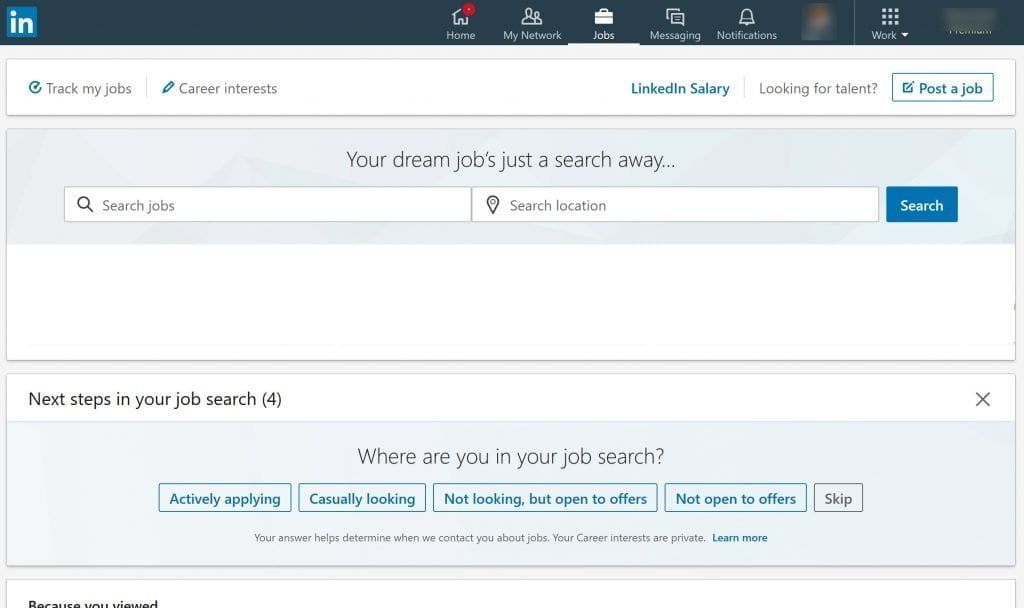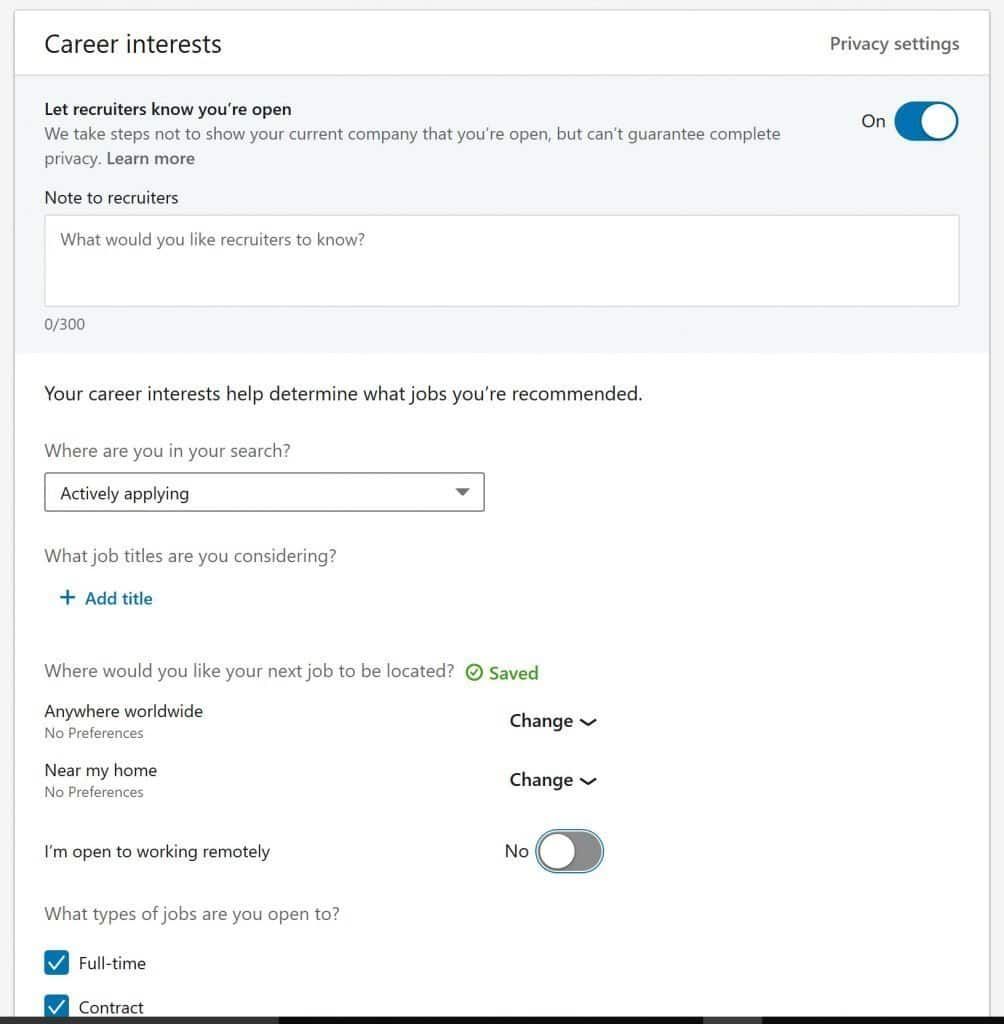LinkedIn is known as the social network that means business (read as) for professionals. You will be hard pressed to find your usual memes, jokes, trolls and unnecessary content on this platform. The Microsoft owned company as come a long way from its humble 2003 origins and now connects over 600 million users between roughly 200 different countries.
I have personally used this platform to find my last two contractual jobs , which means you don’t only have to rely on newspaper job listings or subpar job websites and apps that can take you for a never ending job hunting spree. So how can Ugandans use this platform and tap into this network for their next jobs?
With the high levels of unemployment among the youth today, here are 14 tips on how to use LinkedIn to find a job in Uganda and other countries worldwide.
Access jobs page
It all starts from where to look. When you log into your LinkedIn account, there is dedicated LinkedIn jobs page where you can go to see available jobs. By default, it will restrict you to search for jobs in your own locale which is logical. Honestly a good job search is only as good as the number of companies that have tech-savvy recruiters who how have adopted the use of social media to get the next best talent.

What are recruiters looking for?
If you’re having trouble figuring out what your next job should be, consider letting the market decide. By figuring out what jobs employers are looking for right now, you can cater your info toward what in-demand positions fit your experience and focus in on the companies looking to get them filled. Sure, the 3 years you spent completing your Bachelors or that Professional course you took and got certified in may mean you’re best suited as a team lead for a company.
Know Your Buzzwords for your CV
Upload a great CV on your profile but beyond finding the right skills to market yourself with, you should also find the right words to do the describing. As in skills, you’ve got to find what companies are searching for. Try incorporating them into descriptions of your past jobs to get a better chance of coming up in potential employers’ searches.
With the right CV, you will have recruiters running your way.
Your profile details
For anyone to care about your profile, you must stand out and need to give them something to care about. Accounts with profile pictures are more likely to be viewed, and accounts with skills listed are 13 times more likely to be viewed. ALWAYS USE A PROFESSIONAL PROFILE PICTURE. All this is to say, the more fleshed-out your profile is with details illustrating who you are, where you’ve worked, what you do, your personality, etc.–the more likely it is that people will look over or, better yet, remember your profile.
Let recruiters know you are available
Its important to let HR managers and agents who utilize this platform to recruit that you are actively searching for your next big gig. LinkedIn offers this functionality and it uses the career interest page just for that. Click that huge toggle button to show that you are available and draft a note to recruiters and also fill in your career interests to help determine what jobs you’re recommended for.

To be more granular you can let recruiters know what kind of job titles are you considering and whether you are looking for a full-time, part-time, Internship or contract job.
Tap Into Real-Life Connections
So if you’re sifting through companies looking for your next job, its advisable to take a thorough look at everyone connected with a company. If there’s anyone you recognize, whether it’s an OB or a passing conversation from last year’s party, don’t be afraid to reach out. Finding the connections you’ve made in the real world on Linkedin to get a foot in the door is what the platform’s all about. Go about asking respectfully, but don’t let shyness push your next job out of reach.
Be Personal
If you get the guts to reach out to someone on LinkedIn, you’ll find a couple of options at your disposal, not all of them are helpful. Namely, you’ll want to avoid anything impersonal. LinkedIn offers a few template messages to use when reaching out. DO NOT please avoid these as much as possible. Experienced employers can tell and you’ll come off as not particularly invested in getting the job.
What you’ll want to do is send a succinct, personal message explaining what job you want and why. Save the cover letter for later. Sending a full document right away will come off as excessive for first contact, unless they’ve reached out to you first.
If you know the person you’re reaching out to in any capacity outside of LinkedIn, try including some detail to jog the person’s memory, like how or where you met and what you talked about
Job Alerts are critical
We’ve already talked about LinkedIn’s job search feature, once you’re done with your search don’t forget to hit the button with the text “Job Alert” above your results. Clicking on the button will get LinkedIn to send you notifications to your account, email, or both whenever a job matching your search criteria comes up. And remember, you can make this as specific or vague as you want, with details like location, time, experience, industry, and whatever else you can fit into the search bar all being fair game.
Be Advanced (Use Advanced Search)
Another, more efficient way to find if any jobs out there might be linked to one of your contacts is advanced search. These are the filters that drop down after you search for a job. In regards to linking potential jobs with contacts, it can be useful but limited. Yes, it immediately shows every company with employees in your network offering jobs, but it’s only those you’ve already connected with on LinkedIn. Second- or third-level connections are excluded from this list.
Advanced also lets you filter by experience, date of job posting, industry, location, and more until you find an opening perfectly catered to you.
Carefully List Your Current Position
Unless you are just starting your career, the last thing an employer is going to search for is “unemployed.” Even if you don’t have a job, you should have some sort of current listing. Please avoid lying. It means getting creative.
Use your present aspirations to guide your current position listing. For example, if you have the qualifying experience and are hoping to land a software engineering job, simply list “Software Engineer Pursuing Work in Developing Information Systems and Software Solutions.”
By having a job title that matches your employment goals, companies looking to fill those types of jobs are more likely to come across your profile.
Also, along with “unemployed,” make sure to avoid words like “seeking opportunities” or “job searcher” as it’ll make you come off as desperate rather than qualified.
Look for remote opportunities

Don’t limit yourself to work in Uganda or home country alone. With advent of the internet and remote working jobs. There are few companies out there that can hire worldwide but a handful in Uganda. Remote working is the future of work, although it has it’s pros and cons you may need to consider it as well. You can also let recruiters know that you are open to remote working on the career interest page.
Follow the Companies You’re Interested in
If a company’s out there that you’re dying for a shot at, remember to follow them. Do this and you’ll get updates on the latest news and, more importantly, job openings at the company. No one wants to check back to find someone else filled the job they’ve always wanted before they even knew it was open.
Join Professional Groups in your line of work
LinkedIn users can be grouped together on merits outside of their employer. When you search something on LinkedIn, click on the “More” button in advanced options to find “Groups.” There, you’ll find different professional communities, or “groups,” organized around whatever it is you just searched it. It can be a specific profession, a general industry, a region, a company, anything with the potential to link workers together in their search for jobs. It’s a useful way for getting tips and news within an area you’re interested, and even making one or two connections.
Check out Company Profiles
Finally, cast your net beyond looking up individual people or positions and take stock of an entire company. LinkedIn provides job seekers to see the page of not just individuals, but companies, too. This can be a godsend for anyone looking to get into a certain business, but struggling to find a path in. On a company’s page, you can see what jobs they’re looking for, and more importantly, the people who work at the company.
Looking over the listed employees, you can see if a previously-unknown personal connection is out there, or if that fails, whether a friend of a friend exists who could put you in touch.


